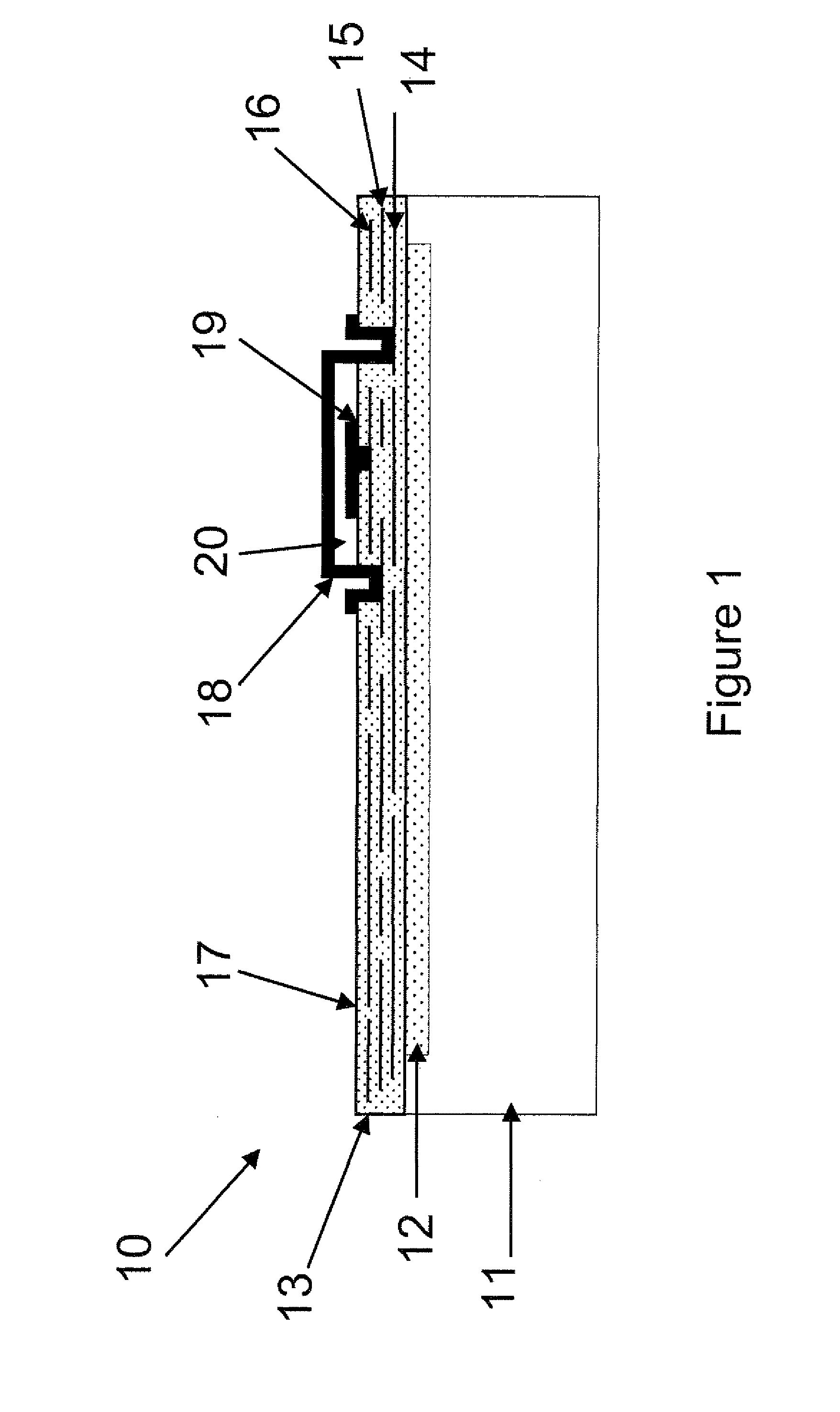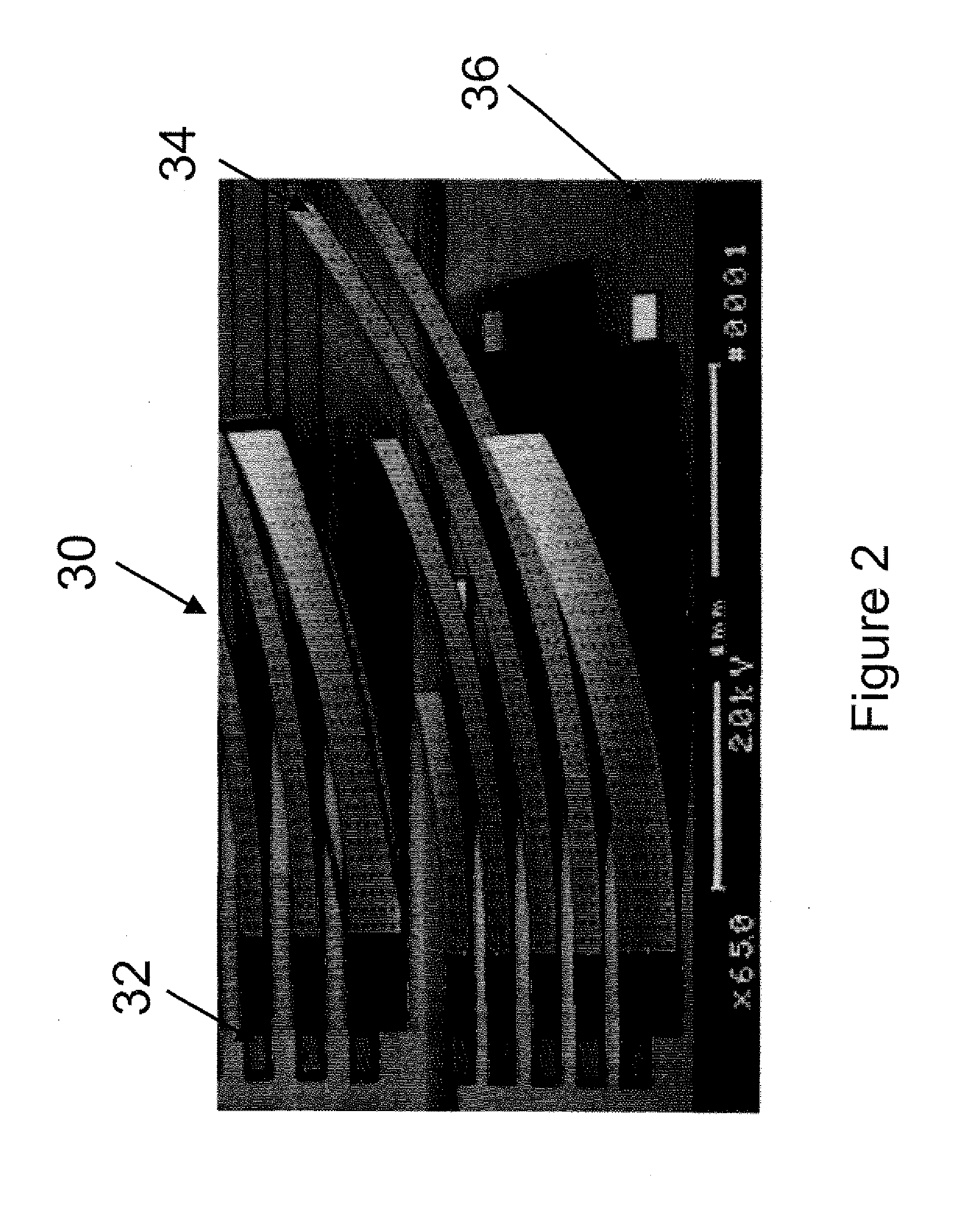Method and system for integrated MEMS and NEMS using deposited thin films having pre-determined stress states
a technology of deposited thin films and integrated mems, which is applied in the direction of vacuum evaporation coating, test/measurement of semiconductor/solid-state devices, coatings, etc., can solve the problems of difficult to predict or control stress state, present state-of-the-art is considerably more modest, and advanced development programs seldom attempt to integrate mems with microelectronics. , to achieve the effect of enhancing the design potential of micro- and nano-dev
- Summary
- Abstract
- Description
- Claims
- Application Information
AI Technical Summary
Benefits of technology
Problems solved by technology
Method used
Image
Examples
Embodiment Construction
[0034]The major factors driving the integration of MEMS / NEMS with microelectronics are performance and cost. From the perspective of performance, merging electronics and MEMS / NEMS has some distinct advantages compared to having MEMS / NEMS and the electronics on separate die, that is the so-called “hybrid” approach. Integration greatly reduces parasitics, which are extremely important in capacitive-based sensors, such as accelerators, gyroscopes, microphones, etc. Also, the power consumption of integrated MEMS / NEMS devices is much lower compared to non-integrated, or hybrid schemes, which is particularly important for certain military applications, such as unattended ground sensors, handheld sensors, and many others.
[0035]Additionally, the noise level problems in integrated MEMS / NEMS are usually lessened. This is because small signals, such as present in capacitive-based MEMS / NEMS sensors, are more immune from background noise sources when the electronics are co-located with the MEMS / ...
PUM
| Property | Measurement | Unit |
|---|---|---|
| Temperature | aaaaa | aaaaa |
| Temperature | aaaaa | aaaaa |
| Temperature | aaaaa | aaaaa |
Abstract
Description
Claims
Application Information
 Login to View More
Login to View More - R&D
- Intellectual Property
- Life Sciences
- Materials
- Tech Scout
- Unparalleled Data Quality
- Higher Quality Content
- 60% Fewer Hallucinations
Browse by: Latest US Patents, China's latest patents, Technical Efficacy Thesaurus, Application Domain, Technology Topic, Popular Technical Reports.
© 2025 PatSnap. All rights reserved.Legal|Privacy policy|Modern Slavery Act Transparency Statement|Sitemap|About US| Contact US: help@patsnap.com



